Fingers base position
The most important thing is to place your forefingers in the middle of the third row of keys (counting from the bottom). For QWERTY keyboards the middle means keys: "F" and "J". The rest of the fingers (except for the thumbs) should be placed along the same row as the forefingers. During touch typing, you reach other keys starting from the base position. You do not need necessarily come back to the base position, after a key has been pressed, although, your forefingers should keep their base position whenever possible.
It is also important that your arms and hands are arranged in a natural way. When typing do not try to bend your arms to the level when you don't feel comfortable. It would be best not to lay your hands too close to each other. If you that the position of your hands or your entire body is forced in some unnatural way during typing, change your position so that you feel comfortable again.
Pressing keys with correct fingers
The schema of correctly assigning keys to fingers resembles a "shifted cascade". The cascade is "shifted" because numeric keys (the first upper row on the keyboard) should be pressed differently than the keys of other rows. Later in this article, we will discuss why the row of numeric keys should be treated as an exception. The fingers-to-keys assignment should look, therefore, the following way:
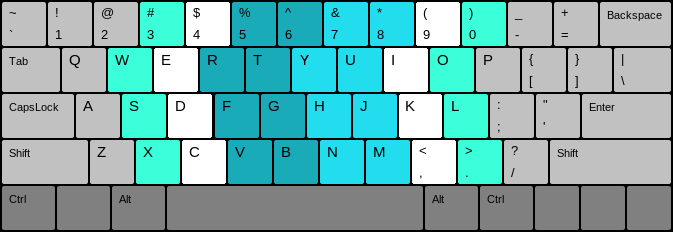
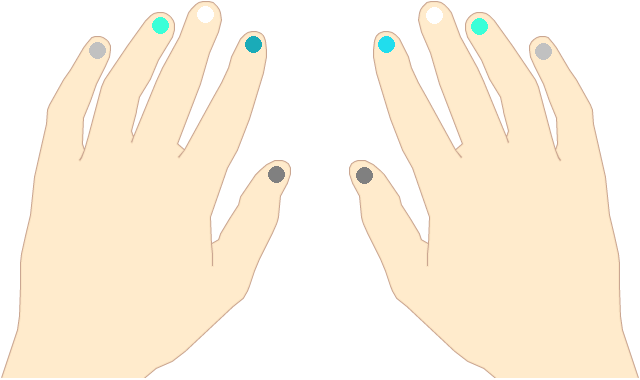
Most of the resources on the Internet show that fingers should be assigned to keyboard keys in the form of a "full cascade". This approach does not work as it should in practice, although, it looks very straightforward in theory; this concept is illustrated in the below picture:


Although the correct approach is not obvious and seems less popular, we are still convinced that it is correct. This approach is just more comfortable for your hands and thus healthier and more effective.
Keyboard's top row of keys
Typing keys of the keyboard's top row is controversial. Some people claim that it is more comfortable for them to type using a "full cascade" pattern. It is hard to argue with others' preferences. If someone has typed for years in one way, it is hard to convince him or her to do it differently now.
Let's try to take a bit scientific approach and make some measurements to check if it is actually closer to reaching the keys with bumps to the center of the top row. How the top row keys are positioned in relation to the center of the keyboard? We will examine the QWERTY keyboard. The keyboard key that interests us is the key with the number "6". Below there are various QWERTY keyboards that have English layout for the United States.
First, let's have a look at a keyboard of a Dell business laptop:
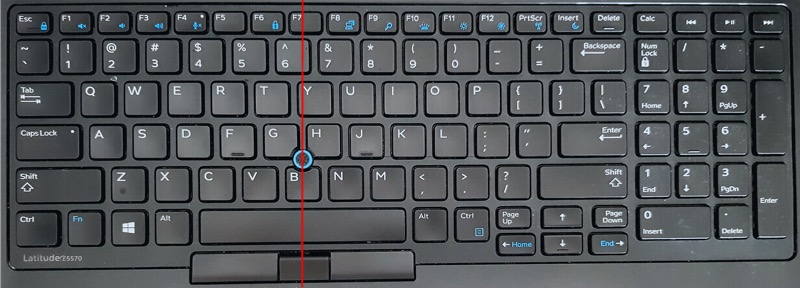
Now let's have a look at the Apple's Macbook Air keyboard:
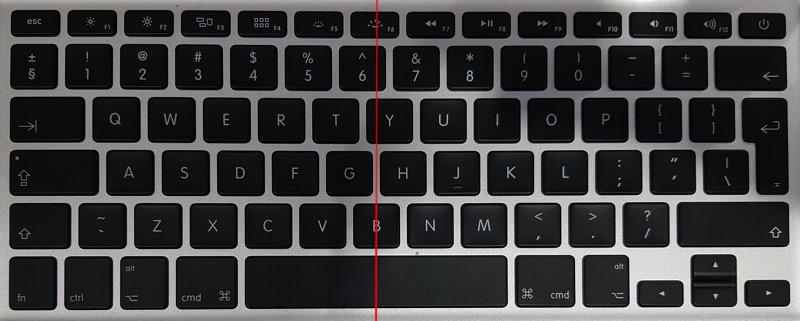
Raspberry Pi keyboard shouldn't differ much regarding the top row of keys:

Maybe it is different for CoolerMaster mechanical keyboard?
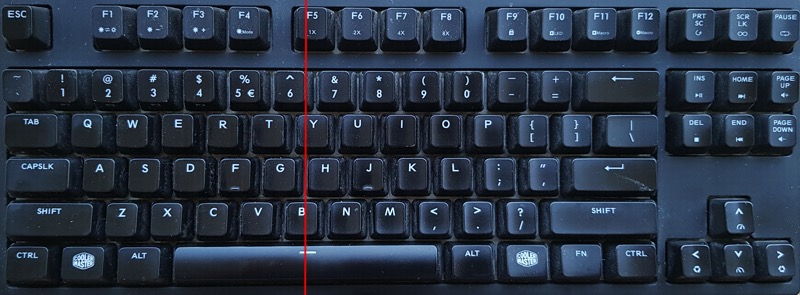
Apparently not.
And finally, let's have a look at the Chicony ergonomic keyboard:
![]()
In all cases, the key with the number "6" is located almost entirely on the left side of the keyboard. It implies that the left hand's pointing finger should click it.
There are examples of keyboards that have an uncommon key arrangement. These keyboards are destined for professionals who know what they are doing when using a substandard keyboard layout. That is why AgileFingers allows custom character assignments to remap the virtual keyboard. It can be set in the options screen. There will be always some exceptions e.g. a fancy ergonomic keyboard that will not fit the AgileFingers way of teaching.
Although it is a shorter distance from the middle of the keyboard to the top row keys using the style of touch typing presented in AgileFingers, one may argue that it is more comfortable to use the full cascade typing pattern. If somebody has typed for many years in a particular way, it is harder to get used to another way of typing. Still, it can be argued that this is not the case if no touch typing technique has been used during routine typing activities. In this case, it is probable that such a person is right-handed and it is easier to reach even more distant keys with the right hand than the left one. Another cause may be that handling the top keyboard row presented in AgileFingers just seems unnatural and it is hard to discuss with this argument as it is a personal feeling.
Keyboard layout learning process
It will take time before you get used to typing using the schema presented in AgileFingers. It is worth investing in learning to type faster, without looking at the keyboard. You may, however, disagree so strongly with the top row mapping that you decide not to use AgileFingers. First of all, we do not force anybody to use the finger assignment in a form of a cascade where the first row of keys is shifted. AgileFingers presents on a virtual keyboard how fingers map to keys, but regarding the top row of your keyboard, you can use the full cascade pattern. You can use AgileFingers settings if you want to assign differently the keys of the first row. It is as simple as that. On the other hand, it is always worth investing in doing something right once and then taking advantage of such investment.